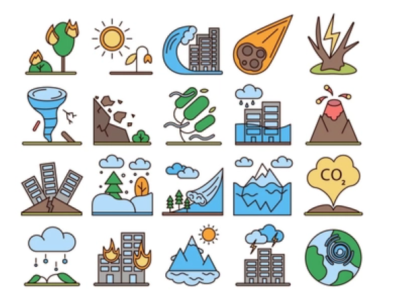
Congratulations, you made it to Week 3-- we're halfway done!
Now that we've covered the essentials of creating a kit and plan, we will focus next on some things you can do around the house to protect yourself, your family, and your property during a natural disaster.
Still not sure which hazards to plan for? Visit this site hazards viewer hosted by DOGAMI, click on "Map" to get started then select the different layers to see which apply to you.
Next, take a look at these resources arranged by hazard type for more in-depth planning related to property and people:
WILDFIRE
With all the forestland in Clatsop County, it isn't uncommon to live in or near areas prone to wildfire. Read here to learn more about developing defensible space to protect your home from wildfire.
EARTHQUAKE
Here is just one site where you can find techniques for mitigating earthquakes in-/outside your home.
Want to get your family involved? Look around the house for earthquake hazards, which are the non-structural solutions that you can take care of easily and economically.
When you are ready to tackle earthquake-proofing the structure of your home, start with this brochure on retrofitting single-family homes.
TSUNAMI
The main focus of tsunami mitigation is to get people out of the inundation zone before water reaches the shore. Find out how to protect yourself and those you care about with preparation and evacuation guidance.
STORM SURGE
Storm and tidal surges tend to come/go more quickly than other hazards, and they are relatively unique to the coast.
COASTAL EROSION
Though coastal erosion isn't as acute as other hazards listed here, it is the process by which local sea level rise, strong wave action, and coastal flooding wear down or carry away rocks, soils, and/or sands along the coast.
FLOODING
A downside to the beautiful rivers and waterways in Clatsop County is flooding. Read more about how to protect your home here.
Encountering floodwaters while driving can be life-threatening, so know what to do when it happens. Turn Around-- Don't Drown!
SEVERE WIND
Whether an isolated major event or a regular day, severe wind is another common coastal hazard for which you can plan and prepare.
LANDSLIDE
Live on or near a slope/hillside? What about landslide history related to the routes you commonly drive? If you're not sure, time to check the hazard viewer at the top of the page! If it applies to you, here are resources to understand the landslide types, indicators, and mitigation strategies.
What to Do & Know about Landslides
How to Prepare Your Home & Family for Landslide
Different Types of Landslides (DOGAMI)




